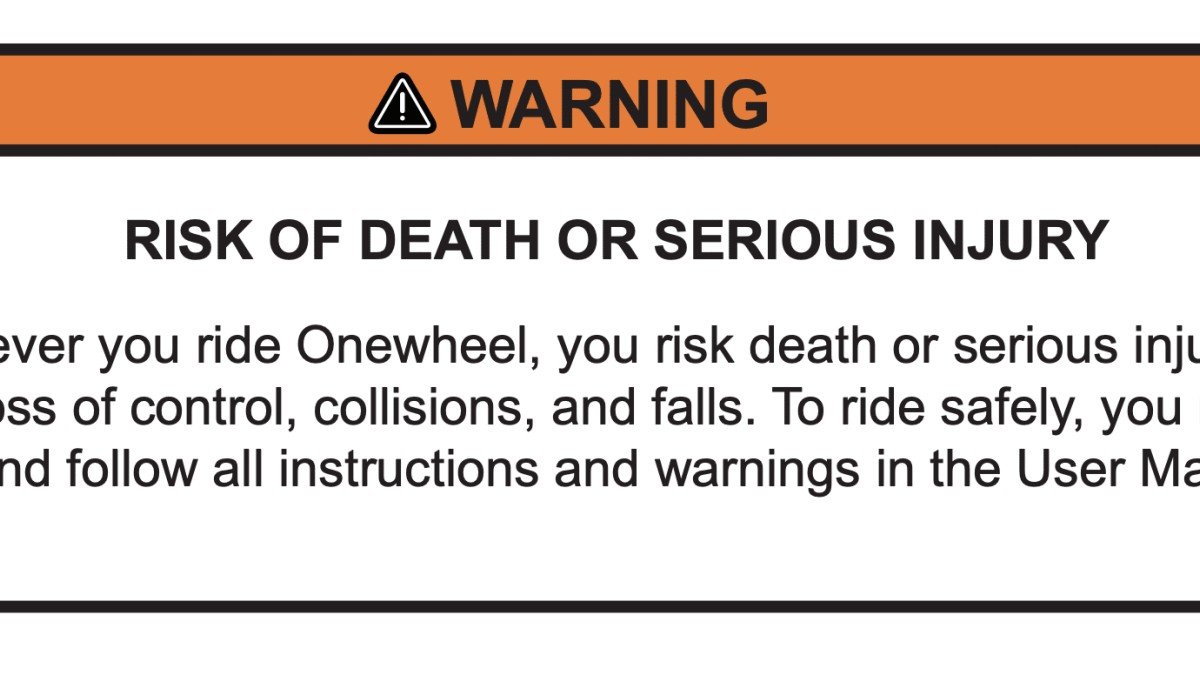
Video Content
Written Content
In this article I talk about the risk of Onewheel and how the death of a Texas man has led to a civil product liability lawsuit against Future Motion, the makers of the Onewheel.
There is a risk of injury and death with just about any activity. Some activities carry higher risk than others and it is up to each of us to make a judgement and decision for ourselves as to whether the benefit of participating in such an activity is worth the risk.
The Onewheel is a risky activity. I would say it is riskier than most activities that I participate in because of the potential for injury from falling during a Onewheel nosedive.
The Nosedive
The Onewheel nosedive has always been a problem for RIDERS of the Onewheel and now the dreaded nosedive seems to be a growing problem for the MAKERS of the Onewheel.
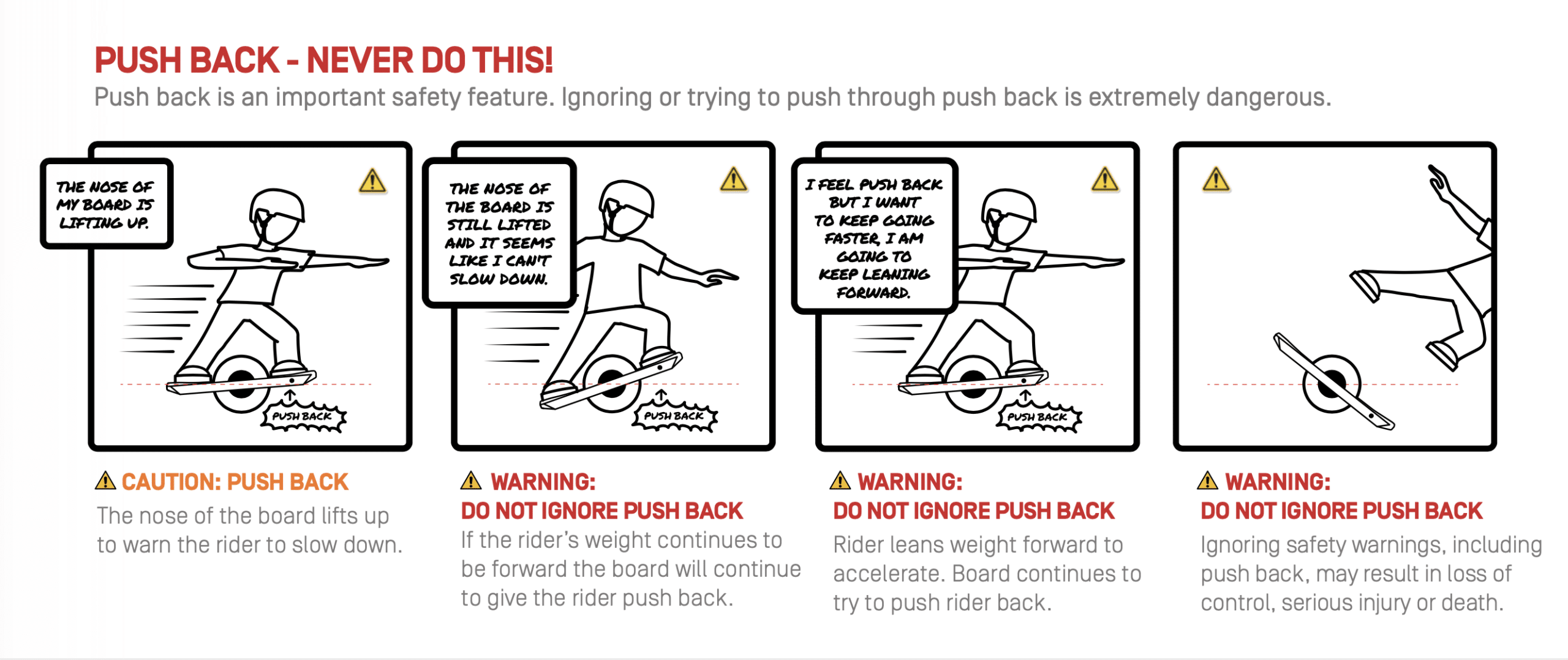
There is a product liability lawsuit going on over the wrongful death of a father who suffered fatal brain injuries while riding a Onewheel that abruptly shut off and nosedived.
When I ride an electric scooter there are motors and electronics working in the background to keep me moving. If for any reason the electronics were to shut down on me mid ride, I would just coast along to a stop. Same with an electric bike and even my electric car. I accept the risk of mechanical failure so that I can enjoy the benefits of riding those devices and vehicles.
When I ride my Onewheel, there are things going on inside the one wheeled device to keep me moving and to keep me upright. If for any reason the electronics were to shut down mid ride, the nose of the Onewheel would fall to the ground and if I were going fast at the time, the momentum would throw me forward and into the ground. That is called a nosedive.
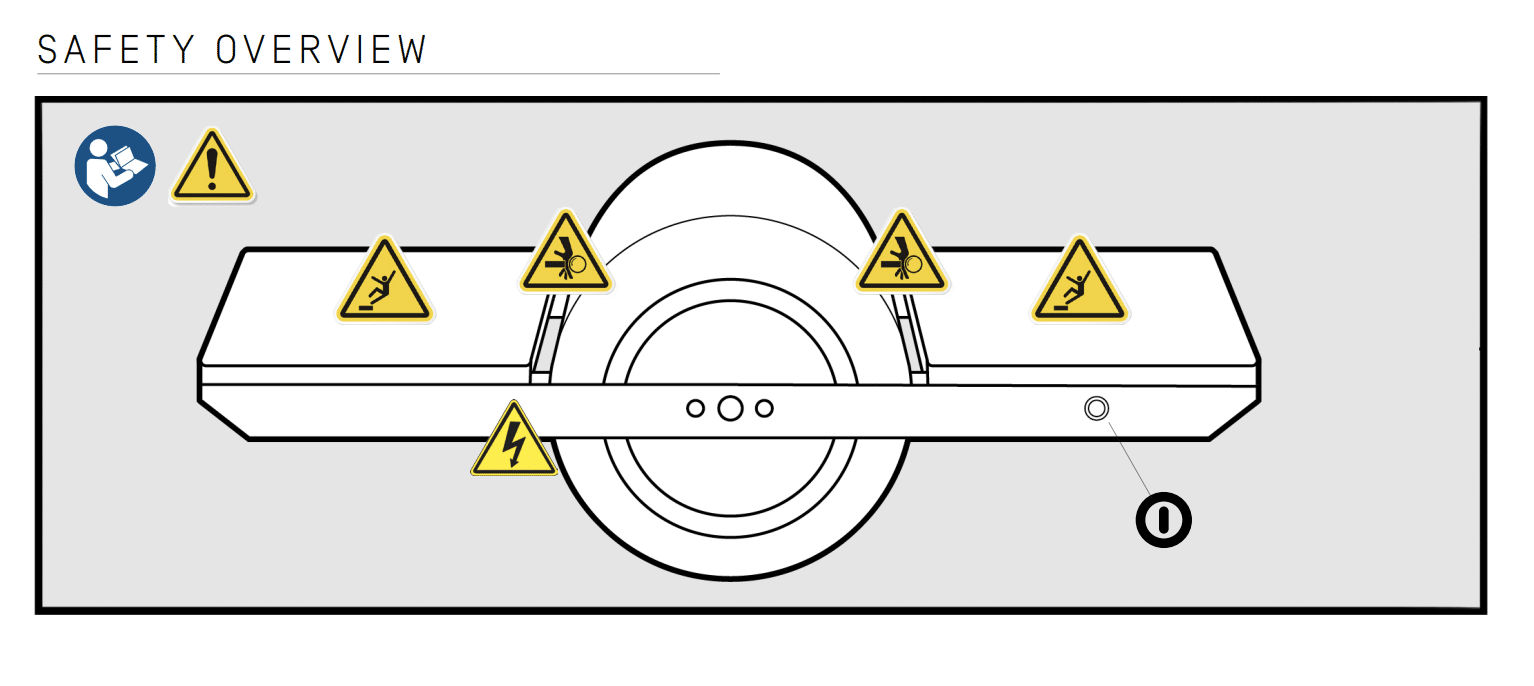
Die hard Onewheel fans will tell you that nosedives are almost always caused by rider error, ie when you overpower the motor by going too fast, ride with a low battery, ride up inclines, or when you ride downhill on a full battery. Those are all recipes for a nosedive.
While there is truth to the statement that nosedives are almost always caused by rider error and I agree that most nosedives could be prevented with experience as well as with responsible and slower riding, mechanical failure can strike at any time.
The Onewheel nosedive is especially problematic to those new to the Onewheel. Because new riders are unfamiliar with the intricacies of the Onewheel, they don’t know how to recognize and respect pushback, the only warning system in place to alert a rider of an impending nosedive.
What scares me most are the things outside my control. I can control my riding habits. I can follow all the rules of safe riding. I can ride in a safe environment. I can wear safety gear. I can respect pushback. But I can’t always control when the device decides to shut down on me.
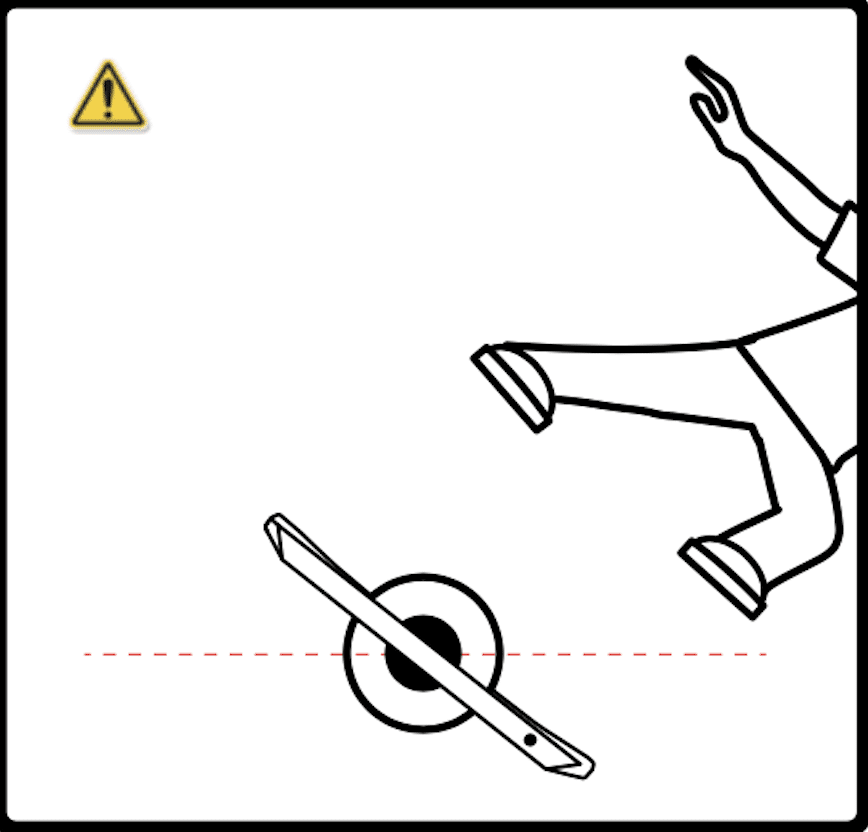
I’ve done multiple videos on Onewheel safety in the past and it was because of a bad fall I had during my first week of ownership that I started posting Onewheel videos on YouTube trying to teach people how to ride safely.
While I love the feel of the Onewheel, I see too many people getting injured on them. Therefore, I made it my mission to preach Onewheel safety and responsible riding.
But gnawing in the back of my mind was the thought that it would only be a matter of time before we saw a serious Onewheel related injury or death that would lead to a lawsuit.
The Lawsuit
The lawsuit against Future Motion was filed on March 13, 2020 in Santa Cruz County Superior Court on behalf of the man's surviving wife and son. It states that the victim had been riding his Onewheel on flat pavement in a Houston neighborhood park when the device experienced a nosedive, causing him to be thrown forward from the board. He experienced severe brain trauma in the crash, and later died during surgery.
The civil product liability lawsuit against Future Motion, Inc., claims defects in the Onewheel caused the Houston man's fatal crash. The suit seeks compensation for pain and suffering, lost financial support, emotional injuries, medical expenses, and punitive damages.
The clients are suing because of the following:
- FM failed to uphold its duties to design, manufacture, and market a safe device;
- FM failed to adequately warn consumers about the risk of serious injury or death when used as intended; and
- FM misled consumers into believing the Onewheel was safe for ordinary use.
Have we been misled?
Future Motion let Popular Science ride and review the Onewheel Pint and the resultant article could lead the public to believe that the Onewheel is a safe device that won't let you crash.
I still remember reading the headline, "How this one-wheeled skateboard lets riders cruise without crashing" over a year ago and thinking to myself: they have got to be kidding!
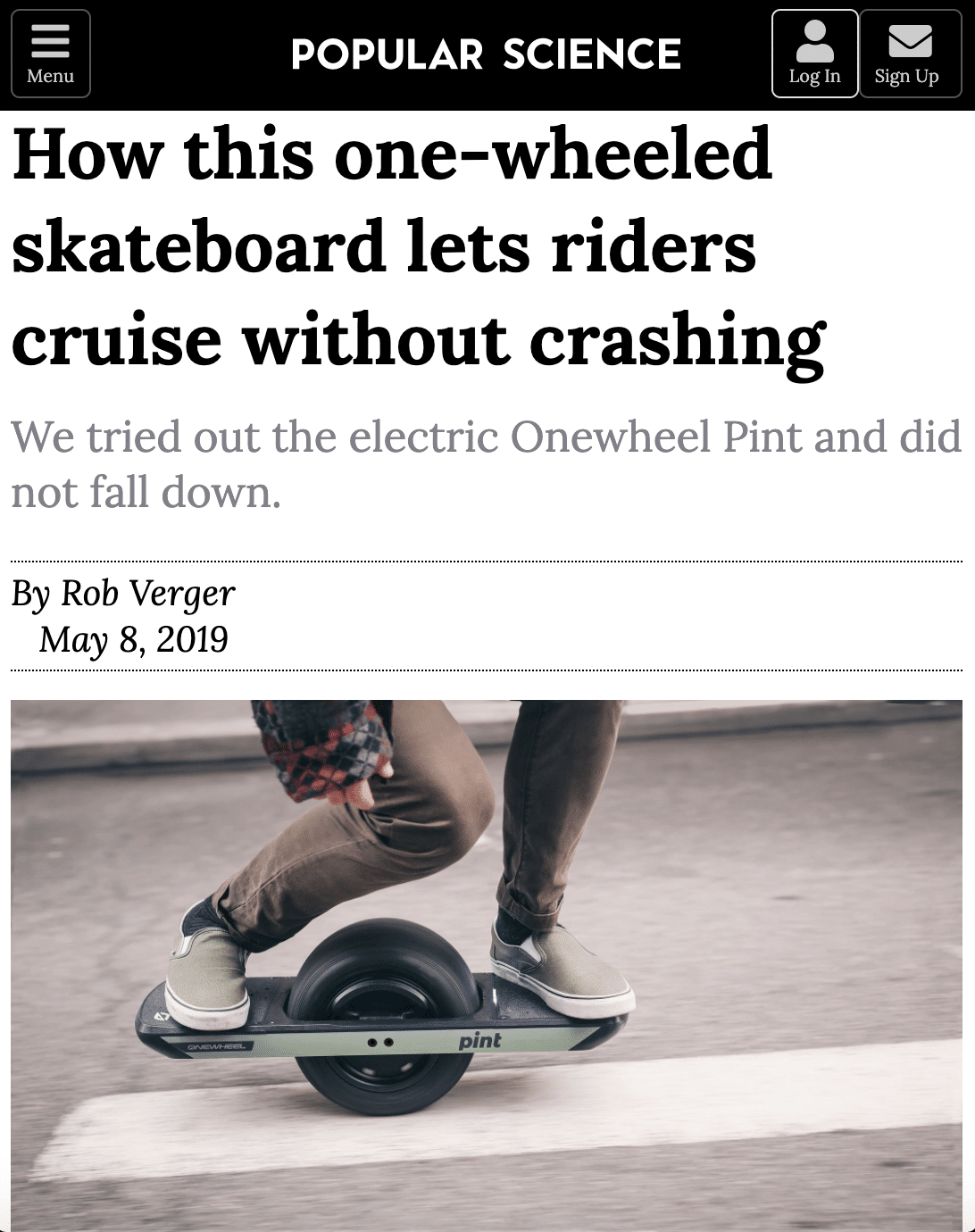
The claimants states they are fighting for Onewheel Accident Victims Nationwide and they want to highlight the dangers associated with the Onewheel, and compel FM into taking responsibility for its products and any harms they may have caused others.
I don’t know the details surrounding the cause of this unfortunate man’s crash. How fast he was going? How much charge was on his Onewheel? Was he wearing safety gear at the time? What was the condition of his Onewheel?
What I do know is the premature loss of human life is always tragic and I am saddened by this gentleman’s untimely death and for his family's loss.
I hope future injuries and deaths can be avoided through rider education, awareness, and responsible riding but as a realist, I know that as the device becomes more popular, more accidents will happen.
Can the Onewheel be safer?
From a Onewheel standpoint, I have always felt that a Onewheel could be safer if it included a more effective warning system to alert riders when a motor is being overpowered and approaching nosedive threshold. Pushback is fine, but it can be too subtle, especially for inexperienced riders.
I would also love to see a more powerful motor with more reserve backup power so that riders that like to push the device to the advertised limits can do so while not coming right up to the proverbial edge of that nosedive cliff.
The advertised speed on the Onewheel XR is 19 miles per hour. But if you were to ride near that top speed with a low battery or up a hill or into a wind or if you were to go a few miles faster than the advertised 19 mph top speed, you would be putting yourself at risk for a nosedive.
Does Future Motion make this adequately clear to riders of the Onewheel?
Nosedive = Voldemort?
The word "nosedive" is taboo at Future Motion just like the name "Voldemort" was to the people in the Harry Potter books.
-Anonymous
I always felt very strongly about the nosedive problem and it bothered me that Future Motion has seemed to erase the word "nosedive" from their lexicon.
I challenge you to try to find a Future Motion video or article that uses the word "nosedive." They seem to avoid using the word. "Pushback" is often used and it is a big deal to FM, and rightly so, but the "N" word is rarely, if ever officially used.
Is it because "you know what" is so dangerous and feared that the folks at FM have decided that not saying the word would help to prevent it from happening?
Yes, most nosedives are caused by rider error but that rider error could be decreased by more awareness and a more robust alert system and instead of through experience and trial and error.
To reduce the rider error and the subsequent nosedive induced broken clavicles, cerebral concussions, and bloody road rashes, the Onewheel app has been updated with a series of short clips to educate riders about the intricacies of the device. This is a great step towards increased awareness and safety education.
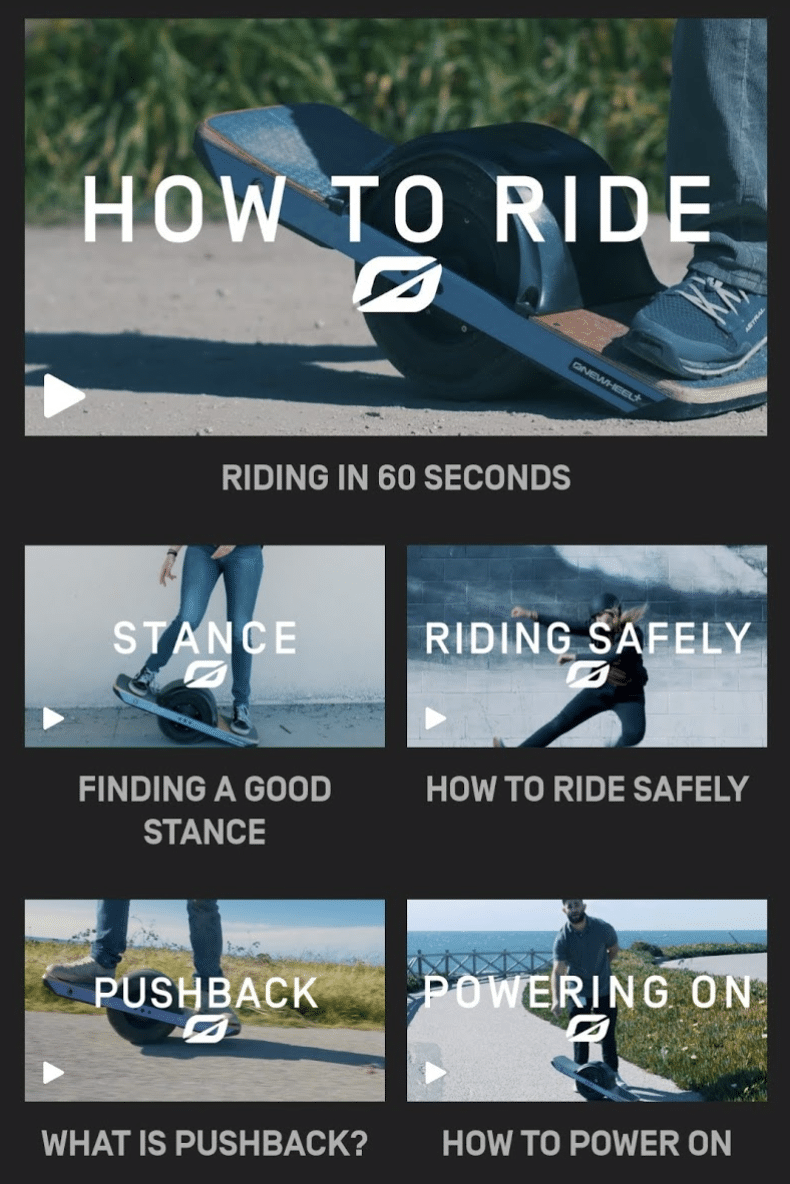
Conclusion
As I said at the beginning, there are risks to everything in life. It is up to each of us to decide whether the benefits of the activity outweighs the risks. For me, it does. I ride conservatively and responsibly and I wear safety gear. Therefore, I feel my risk of injury or death is reduced, though never completely eliminated.
To me, the smooth carvy feeling I get when I ride is worth the risk. Perhaps you are like me and this is how you feel. Perhaps you are like my wife who feels the opposite and will never ride the Onewheel again. Regardless, it is a personal choice and I make videos and write articles on topics like these so that you can make an informed decision for yourself.
There is personal responsibility and accountability that follows the decisions we make. However, companies have a duty to inform consumers how to safely use their products. Companies should also adequately warn consumers of the dangers involved with their products. Did Future Motion uphold their duty? That will be up to a jury to decide.
I’ve made a playlist with a specific focus on safe riding that have helped me, my family, and my friends ride safely over the years so make sure to watch and share these videos:
No comments yet…